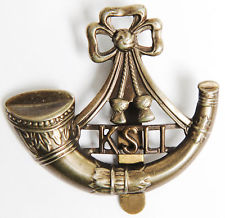Personal Details
Born: 4 March 1896 in Whitchurch, Shropshire and baptised on 20 March of the same year in St. Alkmund’s Parish Church.
Family: He was the elder of two children born to William Hughes, an iron founder, and his wife Sarah. He married Lucy Clayton in 1920 in Whitchurch and together they had one child, Nancy. He married again to Nellie Clare in Nantwich in 1924 and together they had one child, Bevill.
Residence: He lived at 20 Green End, Whitchurch until at least 1919 when he left the army. At the time of his death he lived at 47 Albert Road, Oswestry.
Employment: His Whitchurch Grammar School record card shows him leaving school in 1911 with two occupations: farming and printing.
Died: 10 February 1981 in Oswestry, aged 84, and buried in Oswestry cemetery on 13 February of the same year.
Military Details
Regiment: King’s Shropshire Light Infantry (previously Labour Corps and Shropshire Yeomanry)
Rank: Private
Service Number: 230446 (previously 542878 and 2590)
Date of Enlistment: Not known
Date of Discharge: Not known
Reason for Discharge: Not known
Other Information: Mentioned in dispatches: London Gazette 14 June 1918, page 7053.
Arthur was awarded the Campaign Medals (British War Medal, and Victory Medal).

The British War Medal (also known as 'Squeak') was a silver or bronze medal awarded to officers and men of the British and Imperial Forces who either entered a theatre of war or entered service overseas between 5th August 1914 and 11th November 1918 inclusive. This was later extended to services in Russia, Siberia and some other areas in 1919 and 1920. Approximately 6.5 million British War Medals were issued. Approximately 6.4 million of these were the silver versions of this medal. Around 110,000 of a bronze version were issued mainly to Chinese, Maltese and Indian Labour Corps. The front (obv or obverse) of the medal depicts the head of George V. The recipient's service number, rank, name and unit was impressed on the rim.
The Allied Victory Medal (also known as 'Wilfred') was issued by each of the allies. It was decided that each of the allies should each issue their own bronze victory medal with a similar design, similar equivalent wording and identical ribbon. The British medal was designed by W. McMillan. The front depicts a winged classical figure representing victory. Approximately 5.7 million victory medals were issued. Interestingly, eligibility for this medal was more restrictive and not everyone who received the British War Medal ('Squeak') also received the Victory Medal ('Wilfred'). However, in general, all recipients of 'Wilfred' also received 'Squeak' and all recipients of The 1914 Star or The 1914/1915 Star (also known as 'Pip') also received both 'Squeak' and 'Wilfred'. The recipient's service number, rank, name and unit was impressed on the rim.

